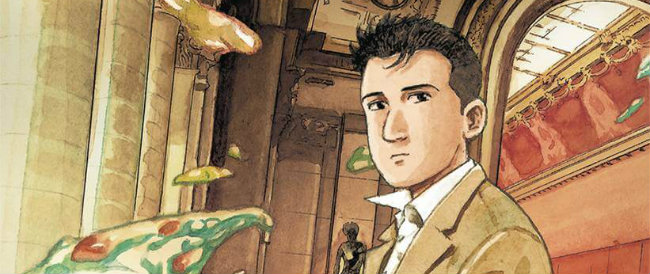Breathtaking, surreal, and bittersweet, Jiro Taniguchi’s trip down memory lane explores his marriage to the world of art through the Louvre’s rich history and his own unbearable loss.
Many of the works to be found in NBM’s Louvre Editions explore the history of the world’s most iconic and important museum. The latest installments in the collection, David Prudhomme’s 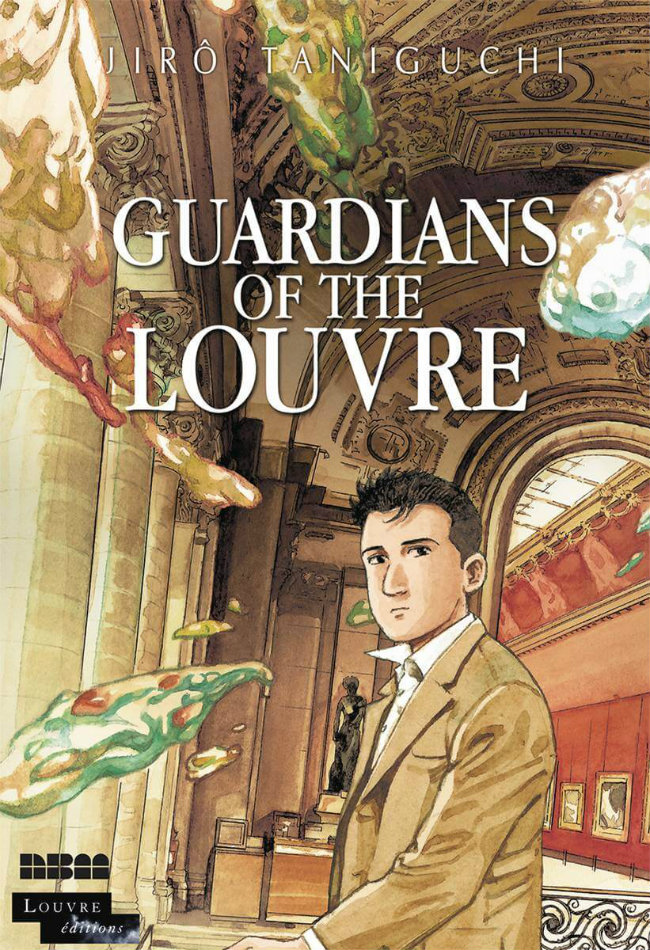 Cruising through the Louvre and this month’s Guardians of the Louvre by Jiro Taniguchi (Summit of the Gods), view the museum through a much more intimate lens.
Cruising through the Louvre and this month’s Guardians of the Louvre by Jiro Taniguchi (Summit of the Gods), view the museum through a much more intimate lens.
While Prudhomme travelled through the Louvre at near breakneck speed, documenting the similarities between the tourists thronging the museum’s expansive galleries and the art they view, Taniguchi’s journey takes place in a world set apart from the hustle and bustle of the institution’s day-to-day operation. During a side trip to Paris after a comics festival in Barcelona, Taniguchi is struck by the lingering effects of an intense fever while visiting the Louvre.
Over the course of a couple of days, he comes to realize that the illness was only a key to unlock his consciousness to the rich history housed in the museum and follows his own guardian of the Louvre – the Winged Victory of Samothrace – on a tour through time and space, visiting important touchstones and personages that evoke both the museum’s eventful history and Taniguchi’s own exploration of the world of art.
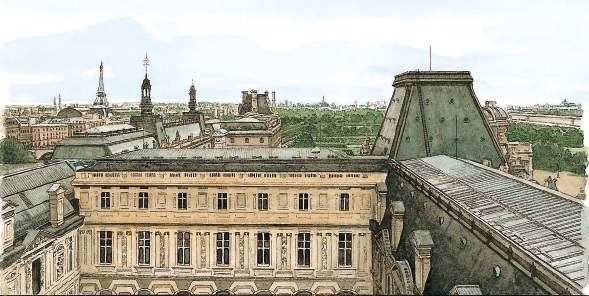
Despite an initial unease, Taniguchi quickly settles into a delightful succession of historic encounters with artists who in some fashion inspired his own artistic path. Along for the ride, the audience discovers little-known facts and artifacts typically forgotten by today’s high-gloss media and the hordes of visitors jostling for a peek at the Mona Lisa.
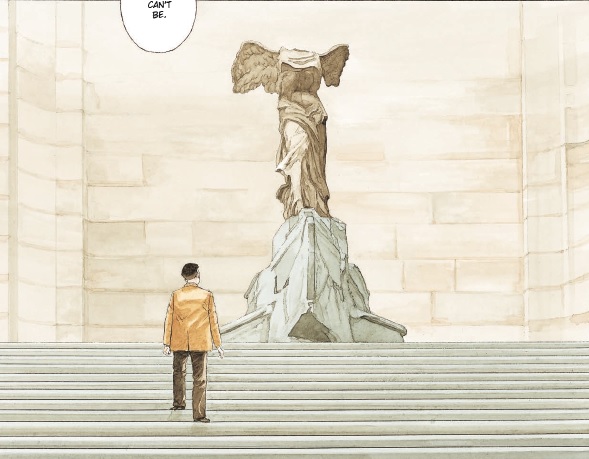 Of particular interest was the fervent exchange of artistic principles between Japanese and French painters of the late 19th–early 20th centuries and how that cultural exchange affected the artistic communities of both nations. Taniguchi is very much aware of his own place in said tradition. His work has a telltale French bande desinee influence in both rendering and colouring styles.
Of particular interest was the fervent exchange of artistic principles between Japanese and French painters of the late 19th–early 20th centuries and how that cultural exchange affected the artistic communities of both nations. Taniguchi is very much aware of his own place in said tradition. His work has a telltale French bande desinee influence in both rendering and colouring styles.
His lush illustrations never feel grafted onto the Louvre’s majestic collection of artifacts. The artists invited to create works for the Louvre Editions have a tendency to try and reproduce or at least reinterpret famous works of art – to varying degrees of success. Usually this practice works quite well to establish time and place but can feel a little tacked on due to an obvious contrast in artistic styles. Taniguchi’s reproductions may quite possibly be the best I’ve seen in the five volumes of the collection that I’ve read and reviewed. Admittedly, the artist chooses his subjects with shrewd calculation, selecting works that have clearly inspired his own style, but he works them so seamlessly into the story and layout that they never feel arbitrary.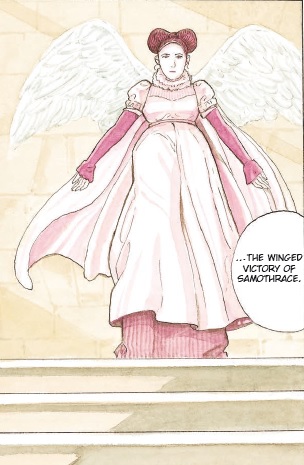
After working through harrowing events in the museum’s history, Taniguchi comes to the conclusion of his guided tour, finally confronting the grief that has been simmering inside since his wife’s passing. He comes to realize that his recent journey through time and space has been one of self-discovery and forgiveness – for himself and his late wife.
Gorgeously illustrated and masterfully told, Taniguchi’s deeply personal journey through the Louvre’s rich history is both educational and enlightening. Guardians of the Louvre reveals as much about the artist as it does its subject, a quality that allows it to resonate not only with fellow artists but anyone who’s ever known one.
Jiro Taniguchi (W, A) • NBM Publishing, $24.99





